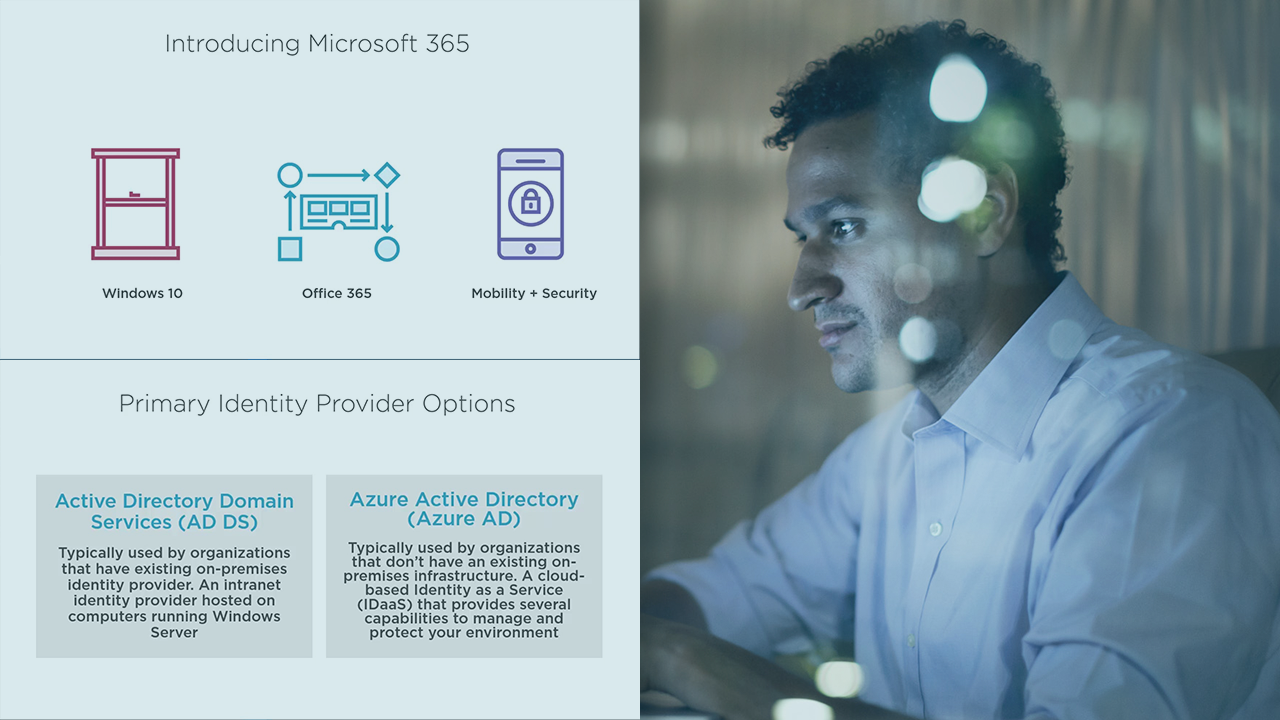- Course
Planning a Microsoft 365 Implementation
This course introduces and explores the planning and deployment considerations for a Microsoft 365 tenant. You’ll discover the primary planning considerations for your Microsoft 365 tenant, deployment of operating systems, and data migration.

- Course
Planning a Microsoft 365 Implementation
This course introduces and explores the planning and deployment considerations for a Microsoft 365 tenant. You’ll discover the primary planning considerations for your Microsoft 365 tenant, deployment of operating systems, and data migration.
Get started today
Access this course and other top-rated tech content with one of our business plans.
Try this course for free
Access this course and other top-rated tech content with one of our individual plans.
This course is included in the libraries shown below:
- Core Tech
What you'll learn
Implementing a Microsoft 365 deployment can sound like a daunting task, and if the planning process doesn’t take all the right things into consideration, it can be challenging and overwhelming. In this course, Planning a Microsoft 365 Implementation, we are going to introduce and discuss the different components involved with the planning process for a Microsoft 365 tenant, the Microsoft 365 components, upgrading to Microsoft 365, and data migration considerations. The planning process should include the three P’s (planning, planning, and more planning) and the three D’s (document, document, document) to ensure everything that needs to be planned for is in fact planned for, the decisions made in the planning process are well documented, and all the key stakeholders sign off on the plan that will be used to deploy and configure the Microsoft 365 tenant. By the end of this course, you'll be proficient in the planning process for Microsoft 365.

